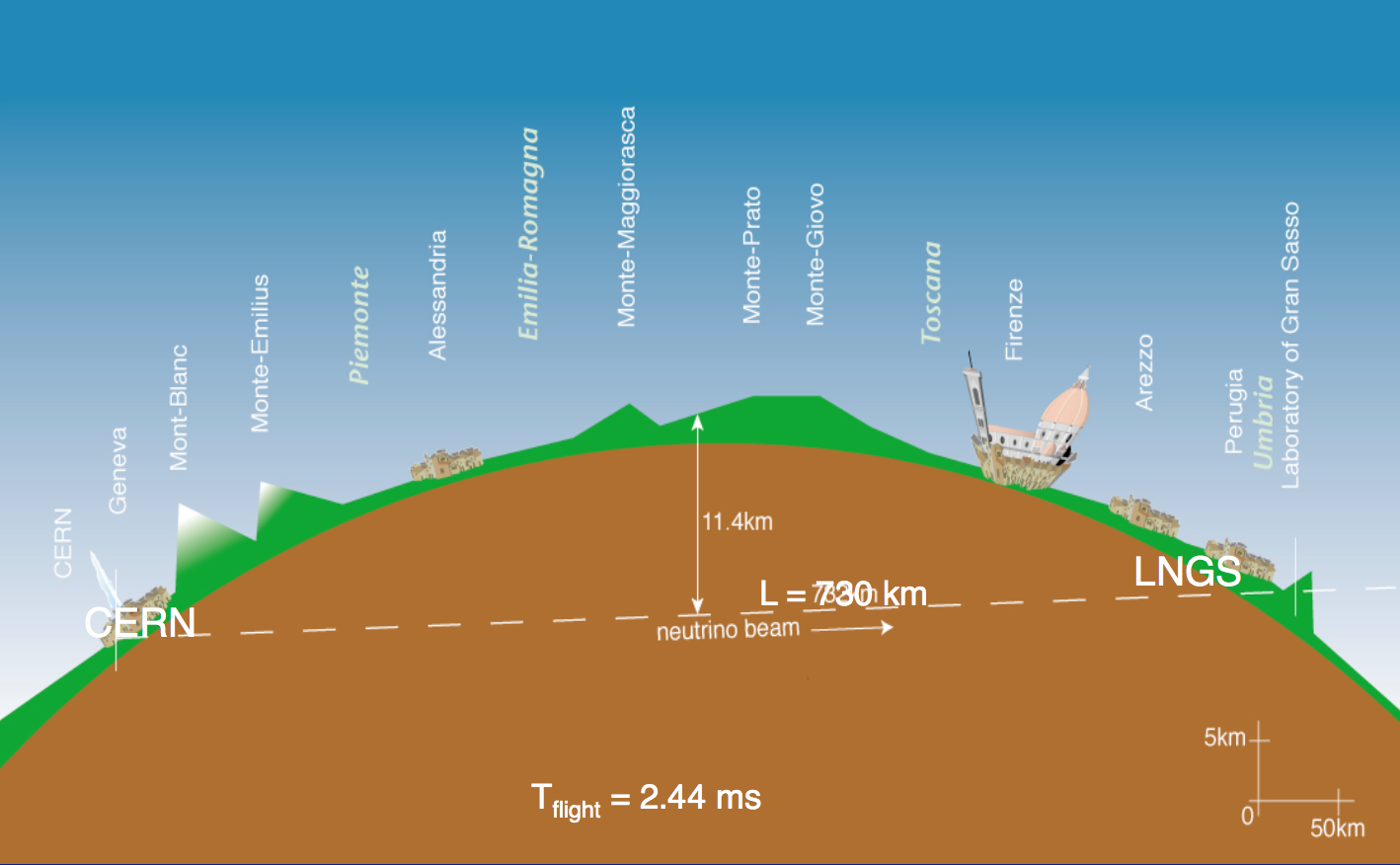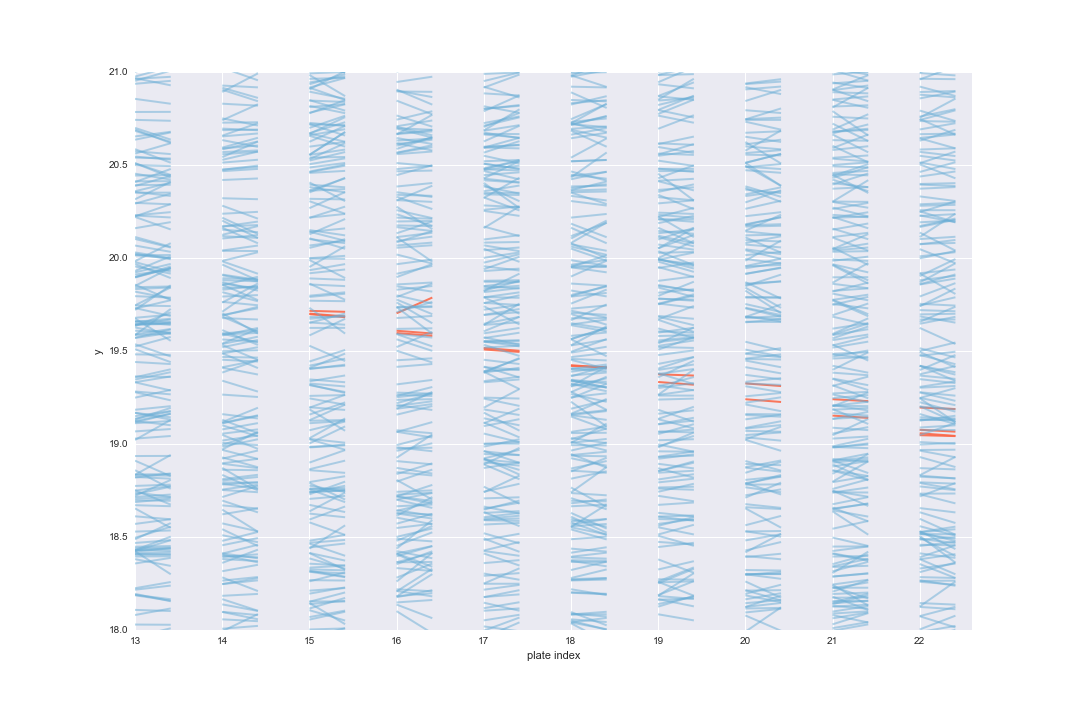Machine learning and dark matter search: competition from CERN and Yandex
Yandex has been cooperating with CERN for several years. He did a search for events in the LHC for physicists, provided his computing resources and data processing technologies, including Matrixnet and ClickHouse . In 2014, Yandex became an associate member of CERN openlab .
The Yandex Data Analysis School participates in two CERN experiments - SHiP and LHCb. Nowadays machine learning becomes a “ microscope ” for modern scientists who need to study large amounts of data and find various patterns in them. This year, the SAD, in conjunction with the laboratory of Big Data Analysis Techniques at HSE and the Imperial College of London, is organizing an international school in the UK that is dedicated to how to apply modern technology in scientific research.

OPERA experiment - from Switzerland to Italy (picture taken from the OPERA collaboration site)
Today, within the framework of the school, an open competition begins, the participants of which will search for neutrinos as much. We invite everyone to take part in the search. They will process data from the international experiment OPERA . For this, the source data will be provided - the results of scanning the layers of photographic films of one “brick” of the OPERA experiment. The competition consists of two stages. At the first stage, participants will look for a separate downpour in the “brick”, the first peak of which is known, on the second - several showers dispersed in the volume of the “brick” without additional information. Winners will be able to talk about their decisions to scientists working at CERN.
The OPERA experiment begins at CERN, from where a neutrino beam is directed — through the ground! - to the Gran Sasso laboratory in Italy. Along the way he undergoes some changes - "oscillations", which are measured in Italy. To do this, the Gran Sasso built a detector of impressive size (10 × 10 × 20 meters) and weighing as much as 4000 tons. The purpose of the detector is to “catch” the neutrino.
On the search for neutrinos
This is not so easy to do, because the neutrino practically does not interact with matter. For example, a huge number - billions of billions - of neutrinos emitted by the sun flies through each of us in a day. And we do not feel it.
However, if you pass a neutrino through a lead plate, then it can be scattered on lead atoms. As a result of scattering, charged particles appear, which are much easier to detect. For example, if you place a layer of film behind a lead plate, then a charged particle passing by will leave a trace in it. This method allows you to trace the appearance of a particle, as well as the direction of its movement and even momentum and energy.
About electromagnetic showers
The neutrino scattering in the OPERA experiment generates a charged particle -
for example, an electron is with great energy. Such an electron can emit a photon. The photon, in turn, can decay into two charged particles - an electron and a positron (an antiparticle of an electron with a positive charge). Emerging electrons and positrons can emit photons, photons - to decay into electrons and positrons, and so on. As a result, one source electron generates a whole stream of electrons and positrons. This process is called electromagnetic shower.

Symbol of electromagnetic shower. Here, the original photon (γ quantum) decays into an electron e- and positron e + and so on
The development process of rainfall is energy-intensive. When the energy of the produced particles becomes insufficient for the formation of new particles, the shower stops.
We do not forget that decays occur on the fly, and that charged particles draw tracks in photographic films.
About the competition
So, the task facing the participants of the competition will be to search for electromagnetic showers. Note that showers can produce charged particles, not only produced by neutrino scattering, but also any other. The main thing is that these particles have great energy.
By the form of a shower, however, it is possible to determine which particle gave birth to it. At once, we say that finding neutrino traces is a great success. Therefore, in the competition, participants will be offered a simulated set of tracks of showers as a signal sample.
About the OPERA experiment
Let's return to the experiment. Several dozen lead plates, alternating with layers of photographic films, are grouped into blocks - “bricks”. The walls of sensors 10 meters high are made up of such “bricks”, which are the detector in the OPERA experiment.

Detector OPERA. The walls made up of “bricks” are painted black (picture taken from the OPERA collaboration site)
When there is a suspicion that neutrino scattering occurred in the “brick” and, accordingly, charged particles were born, then such a brick is removed and sent to the study. A special system scans the film layers and restores the tracks (tracks) left by the charged particles.
About machine learning
It seems to be nothing complicated, but the data coming from the scanning system looks like this:

The results of scanning layers of photographic films of one of the "bricks" of the experiment
This figure shows a part of one “brick”, namely layers of photographic films with numbers from 13 to 22 (there are 57 layers in a block). For convenience of display, the distance between the layers is reduced (lead plates are “thrown out”).
The tracks displayed here are by no means all. In fact, they are ten times more! If you display all the tracks, you get an almost solid blue background.
Why are there so many of them? The fact is that there is a huge amount of “noise” tracks - those that leave, for example, charged particles arriving from space and not related to the experiment.
Understand this chaos and highlight useful tracks seems impossible. Machine learning techniques come to the rescue. For example, after processing this “brick”, the following picture can be obtained:

The results of data processing methods of machine learning
Useful signal tracks are highlighted in red. It can be seen that they are traces of particles constituting an electromagnetic shower.
You can trace the "history" of this shower. For example, the upper particle, during the transition from the 15th layer to the 16th, collided with the lead atom and changed the direction of motion. In this case, a photon was emitted, the electron lost energy and, apparently, was absorbed in the lead plate between the 16th and 17th layers.
About the SHiP experiment
The organizers of the SHiP experiment faced the task of searching for several showers in one "brick". This ambitious experiment, actively developed at CERN, is aimed at finding particles that no one has yet seen and which will help to explain the riddle of dark matter.
According to one hypothesis, particles of light dark matter can behave like neutrinos. In the SHiP experiment, it is planned to use a similar detector - a wall of “bricks” - as in OPERA. Unlike the OPERA detector, the “bricks” of the SHiP will be much closer to the neutrino source (tens of meters, not hundreds of kilometers), so the number of electromagnetic showers in them will be much higher. Accordingly, more sensitive algorithms are needed that can recognize and process several dozens of showers in one brick.
About the winners
The winners of the competition will be able to take part in the meeting of the SHiP collaboration devoted to the problems of the experiment. On it, they will be able to talk about their decisions to scientists who are directly working on the experiment.
')
Source: https://habr.com/ru/post/333490/
All Articles